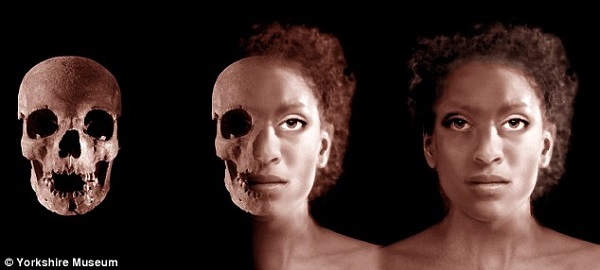Ivory Bangle Lady
The remains of a Roman woman known as the Ivory Bangle Lady have helped archaeologists discover that wealthy people from across the Empire were living in fourth century York.

Archaeological research on one of the Yorkshire Museum’s best-preserved burial finds paints a picture of a cosmopolitan city, a theme explored in our Roman York gallery.
The skeleton is thought to be of a high-status woman from Roman York, whose story is revealed in our exhibition using real evidence and research uncovered by archaeologists.
Known as the Ivory Bangle Lady, the skeleton was found in 1901 near to Sycamore Terrace in York, a street lying mid-way between Bootham, the main road going north out of York, and the River Ouse.
Her remains, dated to the second half of the fourth century, were found with jet and elephant ivory bracelets, earrings, pendants, beads, a blue glass jug and a glass mirror.
The most famous object from the burial is a rectangular openwork mount of bone, possibly from an unrecorded wooden casket, which reads “Hail, sister, may you live in God” indicating she may have had Christian beliefs.
The research by the University of Reading’s Department of Archaeology analysed her facial features, the chemical signature of the food and drink she consumed, and the evidence from the burial site. The research pointed to a high status incomer to Roman York, likely to have been of North African descent.
The skeleton and the grave goods are on display in Roman York: Meet the People of the Empire.
Please note: The Yorkshire Museum is home to an extensive and varied collection of items and artefacts. Whilst we make every effort to display a broad spectrum of our collections it is not always possible for all our collections to be on display at once.


